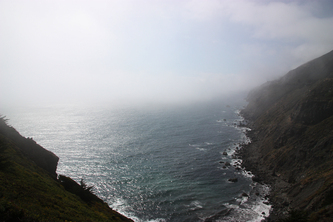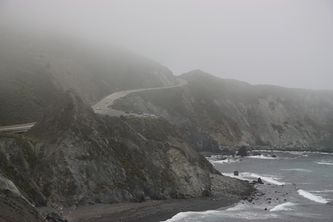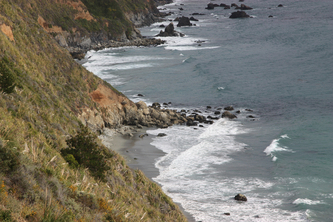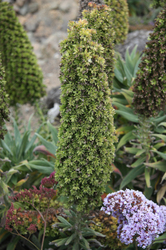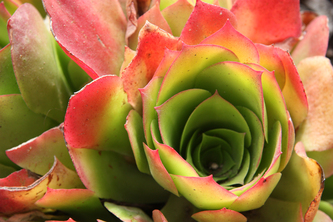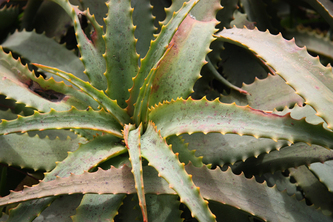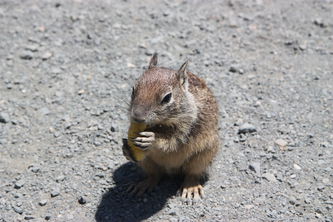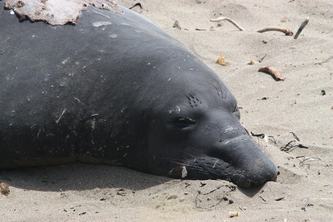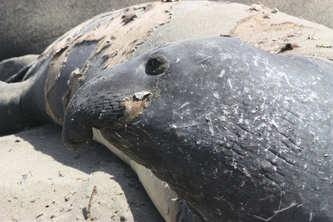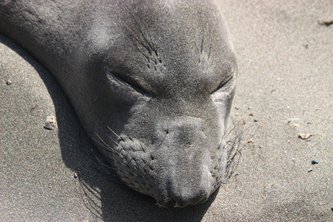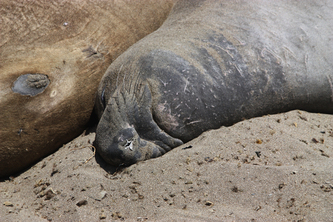Big Sur, California - The Greatest Meeting of Land and Sea
Big Sur is located along Scenic Highway One approximately 150 miles south of San Francisco and 300 miles north of Los Angeles. Historically, the name Big Sur, was derived from that unexplored and unmapped wilderness area called El Sur Grande which lies along the coast south of Monterey. Today, Big Sur refers to that 90-mile stretch of rugged and awesomely beautiful coastline between Carmel to the north and San Simeon (Hearst Castle) to the south. Highway 1 winds along its length and is flanked on one side by the majestic Santa Lucia Mountains and on the other by the rocky Pacific Coast.
AND THAT IS THE BIG SUR
Beautiful flowers along the Big Sur ...........Mom I thought of you each and every time I stopped to take a picture
little dancing squirrels that beg for treats
A COLONY OF ELEPHANT SEALS ALONG THE BIG SUR ...... and most are molting
Molting
Pinnipeds, like other mammals, must replace old skin and hair. Most animals shed hairs year-around, but elephant seals do it all at once. The molting process is so abrupt in the elephant seal that it is called a catastrophic molt. During the spring and summer months, elephant seals return to Año Nuevo for their annual molts.
Pinnipeds, like other mammals, must replace old skin and hair. Most animals shed hairs year-around, but elephant seals do it all at once. The molting process is so abrupt in the elephant seal that it is called a catastrophic molt. During the spring and summer months, elephant seals return to Año Nuevo for their annual molts.
- April to May - Females and juveniles
- May to June - Sub-adult males
- July to August - Adult males
Fast Facts
Type:
Mammal
Diet:
Carnivore
Average life span in the wild:
9 years (northern); 20 to 22 years (southern)
Size:
Up to 20 ft (6 m)
Weight:
Up to 8,800 lbs (4,000 kg)
Group name:
Colony
Did you know?
Southern elephant seals can dive over 4,921 feet (1,500 meters) deep and remain submerged for up to two hours.
Size relative to a 6-ft (2-m) man
There are two species of elephant seals, the northern and southern. Northern elephant seals can be found in California and Baja California, though they prefer to frequent offshore islands rather than the North American mainland.
Southern elephant seals live in sub-Antarctic and Antarctic waters that feature brutally cold conditions but are rich in the fish, squid, and other marine foods these seals enjoy. Southern elephant seals breed on land but spend their winters in the frigid Antarctic waters near the Antarctic pack ice.
Southern elephants are the largest of all seals. Males can be over 20 feet (6 meters) long and weigh up to 8,800 pounds (4,000 kilograms). But these massive pinnipeds aren't called elephant seals because of their size. They take their name from their trunklike inflatable snouts.
When breeding season arrives, male elephant seals define and defend territories. They collect a harem of 40 to 50 females, which are much smaller than their enormous mates. Males battle each other for mating dominance. Some encounters end with roaring and aggressive posturing, but many others turn into violent and bloody battles.
Sea elephants, as these seals are sometimes called, give birth in late winter to a single pup and nurse it for approximately a month. While suckling their young, females do not eat—both mother and child live off the energy stored in ample reserves of her blubber. Females give birth to a single pup each year after an 11-month pregnancy.
Elephant seals were aggressively hunted for their oil, and their numbers were once reduced to the brink of extinction. Fortunately, populations have rebounded under legal protections.
Southern elephant seals live in sub-Antarctic and Antarctic waters that feature brutally cold conditions but are rich in the fish, squid, and other marine foods these seals enjoy. Southern elephant seals breed on land but spend their winters in the frigid Antarctic waters near the Antarctic pack ice.
Southern elephants are the largest of all seals. Males can be over 20 feet (6 meters) long and weigh up to 8,800 pounds (4,000 kilograms). But these massive pinnipeds aren't called elephant seals because of their size. They take their name from their trunklike inflatable snouts.
When breeding season arrives, male elephant seals define and defend territories. They collect a harem of 40 to 50 females, which are much smaller than their enormous mates. Males battle each other for mating dominance. Some encounters end with roaring and aggressive posturing, but many others turn into violent and bloody battles.
Sea elephants, as these seals are sometimes called, give birth in late winter to a single pup and nurse it for approximately a month. While suckling their young, females do not eat—both mother and child live off the energy stored in ample reserves of her blubber. Females give birth to a single pup each year after an 11-month pregnancy.
Elephant seals were aggressively hunted for their oil, and their numbers were once reduced to the brink of extinction. Fortunately, populations have rebounded under legal protections.
FOR THOSE WHO NEEDED MORE ELEPHANT SEAL PICTURES....HERE THEY ARE
I could have stayed forever taking pictures...the elephant seals did not care that we were there, and only every so often did they even look at us. Watching them smush their faces into the sand was sooooo funny and they used their flippers to throw sand ontop of themselves. The females have the small nose and the males have the big nose, and there are a few babies. The young males sparred a lot. They make unusual faces with emotion....too funny.
There were few and far between places that they could go to sun themselves, most of the shoreline in the big sur is very very rocky.



